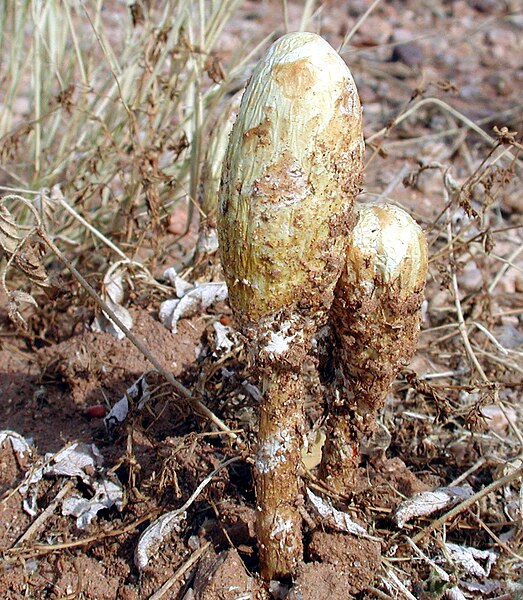Secotioid fungi are an intermediate growth form between mushroom-like hymenomycetes and closed bag-shaped gasteromycetes, where an evolutionary process of gasteromycetation has started but not run to completion. Secotioid fungi may or may not have opening caps, but in any case they often lack the vertical geotropic orientation of the hymenophore needed to allow the spores to be dispersed by wind, and the basidiospores are not forcibly discharged or otherwise prevented from being dispersed —note—some mycologists do not consider a species to be secotioid unless it has lost ballistospory.
Psilocybe weraroa, a secotioid form of the bluing Psilocybe in the cyanescens complex.
Cross-section of Hymenogaster tener
Pholiota nubigena
Agaricus deserticola
The gasteroid fungi are a group of fungi in the Basidiomycota. Species were formerly placed in the obsolete class Gasteromycetes Fr., or the equally obsolete order Gasteromycetales Rea, because they produce spores inside their basidiocarps rather than on an outer surface. However, the class is polyphyletic, as such species—which include puffballs, earthstars, stinkhorns, and false truffles—are not closely related to each other. Because they are often studied as a group, it has been convenient to retain the informal (non-taxonomic) name of "gasteroid fungi".
The puffball Lycoperdon perlatum in Germany
Devil's fingers, Clathrus archeri, emerging from its gasteroid 'eggs'
The berry-like red-pouch fungus, Leratiomyces erythrocephalus, New Zealand
Podaxis pistillaris, a gasteroid fungus adapted to arid conditions








